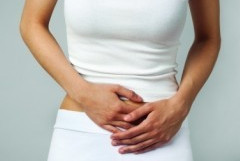Cystitis a burning issue

Urinary Tract Infections (UTIs) are common and are mainly due to bacterial infection. The predominant organisms include Escherichia coli, Staphylococcus saprophyticus, Klebsiella and Proteus. Cystitis is a bladder infection. Symptoms of cystitis include frequent urgent burning or painful voiding of small volumes of urine. Nocturia (night time urination) and lower back pain are common. Urinary tract infections and cystitis occur predominantly in women. Isolated UTIs occur in 30% of all women; recurrent UTIs occur in 60% of cases.
Groups most commonly affected are women who are sexually active, pregnant, and menopausal or have diabetes mellitus. That encompasses a reasonably large group of women wouldn’t you say?!
Cranberry (Vaccinium macrocarpon) has traditionally been used to treat urinary tract infections. Many of you will have consumed copious amounts of cranberry juice or popped a dozen or so cranberry capsules during the acute stage of infection. We previously assumed the cranberry stopped E.coli bacteria from adhering to the bladder wall.
Recent research has in fact show that the active component in cranberries, proanthocyanidins (PACs) actually competitively bind to the E.coli and flushes E.coli out in the urine. In other words cranberry extracts exhibit highly potent bacterial anti-adhesion activity against uropathogenic strains of E.coli due to the high content and most importantly the quality of PAC (more on that later).
I am using a particular strain of Cranberry extract in the clinic currently which has a proven standardised dose of 36 mg of PACs.
Clinical trials using this extract have been astounding. For example, a study of 15 elderly patients 68–69 years, after having a radical cystectomy and bladder replacement and repeated urinary infections, bacteriuria was reduced by 93% during the treatment with one capsule per day. Similarly in a randomised, double-blinded, reference controlled trial, 192 children aged between 1 month and 13 years with recurrent urinary tract infections were followed for a year. The children were randomised to receive either the cranberry extract discussed above in syrup form or the antibiotic Trimethoprim. The recurrence rate of UTI after 12 months was 28.4% in the cranberry group and 43.2% in the trimethoprim group.
Quality control
I was astonished to discover that a large percentage of cranberry capsules manufactured in Australia are made from the remnants of cranberry juice production. That is the skins, remaining pulp… hmmh not good!
Ten commercial cranberry supplements commonly available in Australia were tested by the BL-DMAC method (a scientifically validated method for quantifying PAC) and found to have levels varying from 0.1 mg to 2.4 mg. The product I am prescribing in the clinic was found to have 36 mg equivalent to 70 g fresh cranberries! Yet again this study proves that
practitioner products are nearly always superior to off-the-shelf products, and not all supplements are created equal! Therapeutic outcomes will always depend on the quality of the supplement prescribed.
